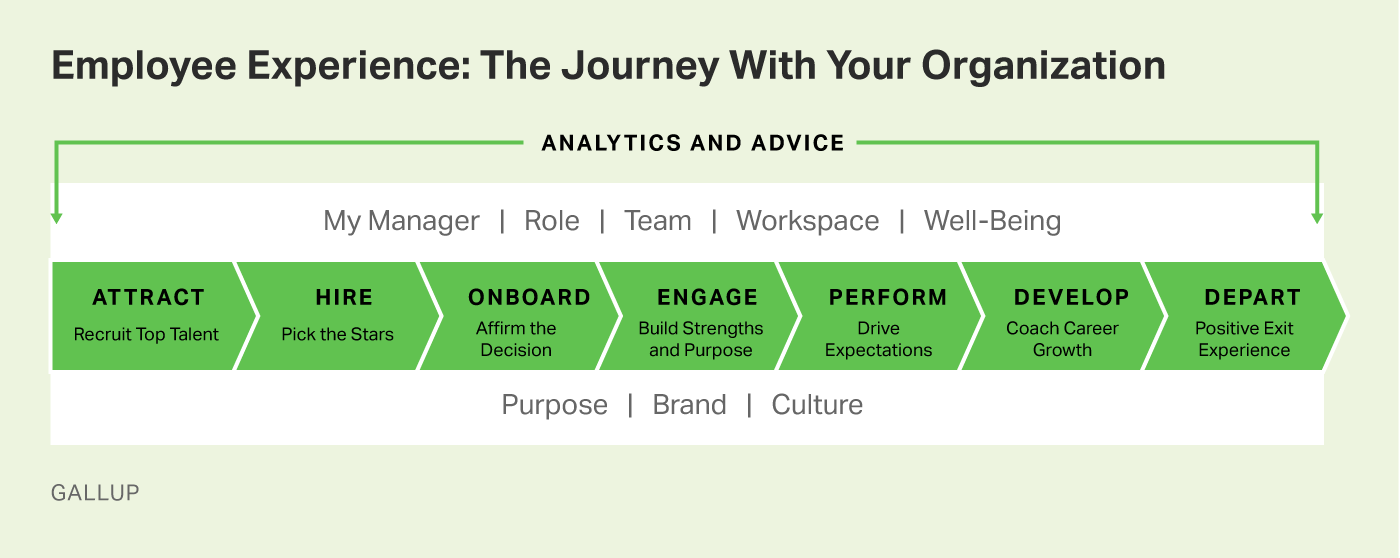
Employee Experience: All You Need to Know
Are You Hiring?
Find candidates in 72 Hours with 5+ million talents in Maukerja Malaysia & Ricebowl using Job Ads.
Hire NowNowadays, the workplace is no longer limited to a 9-to-5 spent in an office cubicle. It now includes remote work (which can take the shape of someone working from home, at a dining table, or reclining on the edge of a pool), virtual meetings, and a variety of other means of communication that are not limited to face-to-face encounters in the office. With these features comes the question of what the employee experience is like and how these changes affect the overall experience.
It's critical for a company to consider how the work experience has changed and how to deal with any negativity that may have arisen as a result of the changes. A pleasant employee experience may be motivating, encouraging, and uplifting to those who need it the most in the ever-changing workplace.
Employee experience, employee lifecycle, and employee feedback/engagement are all phrases that sound similar but differ just enough to make you think. This article will define these concepts for you and show you how they function together.
Employee Experience: What It Is
According to IBM, employee experience is defined as a set of views that employees have about their experiences at work in reaction to their interactions with the organisation. While this sounds fantastic, it doesn't really explain what the employee experience is and why it's essential.
Expanding on IBM's description, the employee experience may be thought of as a collection of the employee's journey with the organisation and how various changes inside the organisation affect their day-to-day lives. Employees are no longer restricted to choosing occupations simply on the basis of compensation.
Employees have been empowered to select employment that match their lifestyles, provide growth possibilities, and create a stronger sense of purpose/perception of their voice being heard.
The Importance of Employee Experience
Let's look at why employee experience is crucial now that we've defined it. Receiving employee input on their experience is one thing; actively implementing changes or enhancements for the purpose of providing a better employee experience from start to finish is another.
The employee experience spans the whole employee's journey with your company, from pre-hire interactions to post-hire interactions, as well as exit interviews when an employee chooses to leave. Understanding this moves the focus away from employee engagement as a primary HR metric and toward the people that make up the company.
The more cared for employees feel, the more likely they are to invest in their work, resulting in improved performance. The more time spent on a "people first" approach, the better the long-term benefits will be. While employee engagement is an important indicator for HR and corporate statistics, it's only one component of a larger picture that focuses on the development of employee experience across the whole employee lifetime, including but not limited to:
- Recruiting,
-
Interviewing and hiring,
-
Learning development & onboarding
-
Employee engagement.
-
Company culture
-
Diversity, equity, and inclusion, and
-
Offboarding
It's clear to see why the employee experience is vital after laying out all aspects of it. Let's talk about the employment lifecycle, employee feedback/engagement, and how the employee experience ties everything together.
Employee Lifecycle and Employee Experience
You might be wondering what the difference is between the employee experience and the employee lifecycle, since the employee experience, comprises everything an employee will face during their stay with your organisation.
As you may know, the employee lifecycle is a common HR tool used to identify different periods of an employee's stay with the firm and where HR can maximise the individual's advancement.
According to the image below, there are a few intersections when the lifecycle phase/stage and the employee experience are the same. This is because HR has identified crucial moments in the employee life cycle: the same stages where an employee's experience may transcend beyond the normal day-to-day.

Source: Employee Experience vs. Engagement: What’s the Difference?
As the employee experience is the culmination of their experiences during their time with an organisation, it's only natural that it follows the employee lifecycle path. This makes it simple for an HR professional to track a relatively fresh perspective beyond employee engagement using a familiar metric.
With the increasing availability of resources linked to the employee experience, it's a no-brainer for you to start thinking about the employee lifecycle from a big picture perspective. Don't limit yourself to employee engagement. Though it's useful, it's a pretty limited picture of the entire employee experience. It's critical to have company analytics at your fingertips at all stages of the employment lifetime.
Source: Employee Cycle

